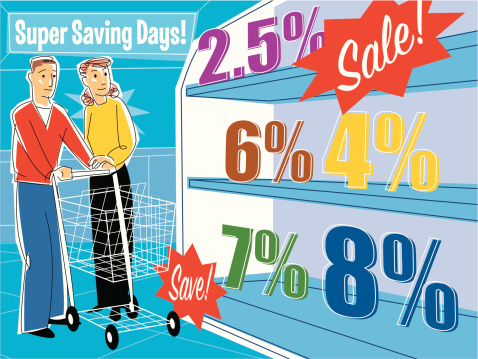3 Steps to Pay Off Debt Before Interest Rates Rise
 |
|
Take advantage of low interest rates to pay off debt faster. |
Interest rates have been low for over a decade. While we’ve gotten used to cheap money, a line of credit at 3% will quickly become a distant memory. Make personal financial changes now so that when rates go up, you’re not faced with a credit crisis you can’t manage.
1. Make a Plan to Pay Off Debt While Interest Rates are Low
It’s become so normal to owe on credit cards, lines of credit and other loans that most people don’t know how to live without debt. Anyone under the age of 30 has never even seen high interest rates and most have grown up seeing that debt is a normal part of living. Having a new car is as easy as 0% and everything else can be charged with deferred payments.
Many people are very accustomed to carrying a balance on their line of credit because they use it to pay off their high interest credit cards each month. If you’re one of these people, what will you do when the interest rate on your line of credit goes up and your minimum payment doubles? In case you're curious, the 35 year average line of credit interest rate is closer to 8%, a far cry from the rates we're seeing today.
Prepare for the inevitable with a realistic plan to pay off debt starting right away. If you use what’s left of this low interest time to your advantage, you’ll avoid a financial nightmare later.
2. Stop Using Credit & Save Money for Unexpected Expenses
The only way to get out of debt is to stop using credit and pay off what you owe. While it’s easy to say, it’s so much harder to do. The available limits on your credit cards and line of credit are not an extension of your pay cheque. Put all of your credit cards away and only use cash for at least one month. Challenge yourself to give this a try. It’s both harder and more rewarding than you might expect!
If you want to stop depending on credit to make ends meet, your plan must include setting money aside to spend later. In the past, this is what we’ve called “savings,” but more accurately, you’ll be spending the money you set aside on expenses that you either forgot about or that only occur periodically. These budget hazards can derail even the best made plans and put you squarely back into debt.
Related: How to Prepare for Unexpected Expenses With a Budget
To start saving, set a little money aside and keep adding to it a little at a time. Before you know it, you’ll have enough cash to pay one bill or to enjoy one meal out and you’ll be well on your way to a new habit.
3. Create a Spending Plan
Okay, “spending plan” is the friendly word for “budget,” so whatever you call it, get one fast. You can’t live within your means if you don’t know what your means are.
Related: Budget Calculator Spreadsheet & Excel Tracking Tool
The clock is ticking on rates going up so if you and your spouse can’t agree, get started with what you can agree on and work on the rest later. Living costs have noticeably increased over the past few years, and that trend isn’t likely to change. You need a plan that ensures you can afford what you need without depending on someone else’s money.
How to Get Help & Guidance to Pay Off Debt
With markets in the red, it’s the perfect time to take advantage of what might just be the last round of low rates to pay off debt. And while red is nice for some things, financially speaking, black is better.
If you need help creating a personal household budget and a plan to pay off debt, a non-profit Canadian credit counselling organization would be happy to answer your questions, give you guidance and provide you with information. Contact one in your area now for free.
Related Articles:
- 12 Ways to Get Out of Debt
- How to Tackle Credit Card Debt & Save Thousands of Dollars
- How to Find a Reliable Company to Help with Debt Problems
- Protect Yourself From Rising Interest Rates
- The 4 Biggest Secrets of Debt Reduction
